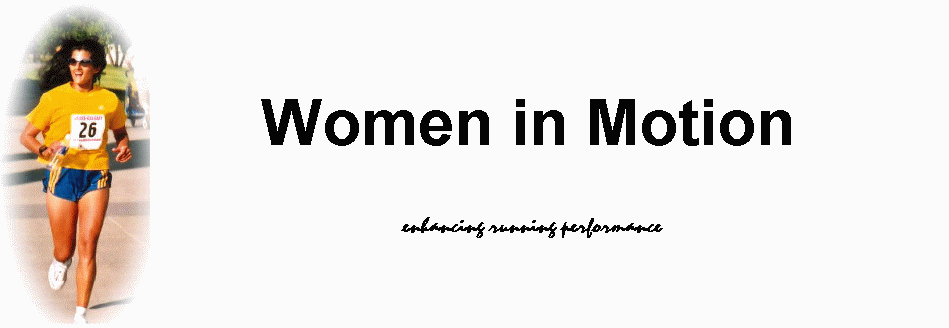Sport Massage
WHAT IS SPORT MASSAGE?
Sport massage is the manual manipulation
of muscle tissue which determines the tone of the
athlete's muscles. The tone of the muscle is the
proportion of fired (contracted) muscle fibres to unfired
fibres. Massage can adjust the muscle tone to enhance
optimal performance. If the muscle tone is too high,
there may not be enough muscle fibre to contract for peak
performance and if the tone is too low, the athlete will
not get enough elastic response for his/her muscles. If
an athlete pushes too hard with a low tone, there is a
greater risk of injury.
THE BENEFITS OF SPORT MASSAGE:
1. Massage acts as a safety check fo
tight muscles warning the therapist and athlete of
potential areas at risk of injury.
2. Loosened muscles enhance performance
and decrease risk of injury (especially before speed
work).
3. Massage increases circulation,
decreases inflammation and removes fatigue by-products
which restrict optimal muscle performance.
4. Massage increases self awareness of
the athlete's body condition and muscle tone.
5. Massage eases pain caused by tightly
contracted muscles that press on nervous tissure by
relaxing the muscle spasm.
6. Massage hastens the recovery period
from muscle fatigue and injury by increasing circulation
resulting in better nutrition, quicker regeneration and
repair.
WHAT IS INVOLVED IN SPORT MASSAGE?
A. Pre-Event Massage:
In conjunction with an athlete's
regular warm-up, a pre-event massage stimulates
the muscle, the circulatory system and the
nervous system to be best prepared for the
upcoming event.
Pre-event massage is usually of
short duration (10-15 minutes). The muscle tone
is evaluated and then treated to adjust it
accordingly.
The circulatory system is
stimulated to increase the oxygen and nutrient
supply to the muscles that are about to be
worked.
Stimulating the nervous system allows muscle to
respond faster. This increases the amount of
muscle fibres that are available for action and
at the same time relaxes muscle tension.
* The athlete's body is now prepared
for
maximal output and performance.
B. Post-Event Massage
Massage aids in muscle fatigue
recovery by increasing the circulation, bringing in
nutrition and eliminating metabolic wastes
generated by the working muscle.
Elimination of metabolic wastes
(energy by-products)reduces muscle soreness and
stiffness, by quickly decreasing the muscle tone
that is caused by muscle fatigue.
Post-event massage relaxes the
central nervous system which also relaxes the
muscle.
Post-event massage helps the
athlete's muscles to relax quicker resulting in
fewer negative after effects following strenous
physical activity.
C. Maintenance and Rehabilitation
Massage:
Regular massage keeps muscles,
tendons and ligaments in optimal condition which
helps prevent injuries.
When muscles are loose they are
better able to uphold the stresses of training
and are less prone to tears.
Acute injuries are treated with
appropriate hydrotherapy, massage and remedial
exercise to avoid fibrosing adhesions and
scar-tissue build-up. This allows the injuries to
heal faster and stronger which helps prevent
chronic problems from developing.
HOW MASSAGE SPEEDS THE RECOVERY PERIOD OF
INJURIES
Reduces swelling to speed the
healing process by restoring the flow of
nutrients to the wound.
Helps prevent the formation of
scar-tissure adhesions. Adhesions are both
stronger and less supple than the surrounding
tissue. This increases the risk of new muscle
tears adjacent to the original injury site.
Increases the circulation to
remove wastes from the injured area.
HOW MASSAGE CAN HELP ALLEVIATE NAGGING
CHRONIC INJURIES:
Muscles will automatically
tighten around an injury to support and protect
the area. If continuous micro-tearing and
re-injury is occurring, or there is a larger
uneven soft tissue tear (in ligaments, tendons or
muscles), the body will eventually lay down scar
tissue at the injury site. The connective tissue
fibres become adhered to the muscle fibres which
shortens the muscle and prevents adequate
circulation from reaching the injured area.
Massage helps to breakdown the scar tissue to
properly align the scar tissue with the muscle
fibres.
If the injury is in a chronic
state, then the muscle has been contracted for a
long period of time. This often causes numbness,
tingling and/or increased pain from compression
on adjacent nerves. Manual manipulation and the
loosening of the muscle will help the muscle
fibres to relax and prevent nerve compression.
Often with chronic injuries other
muscle aches develop. Surrounding muscles may
compensate for the inability of the injured
muscle to perform its required activity. Massage
can help by relaxing these tense overworked and
misused muscles.
 © Women
in Motion -September 1.2000 © Women
in Motion -September 1.2000
|

